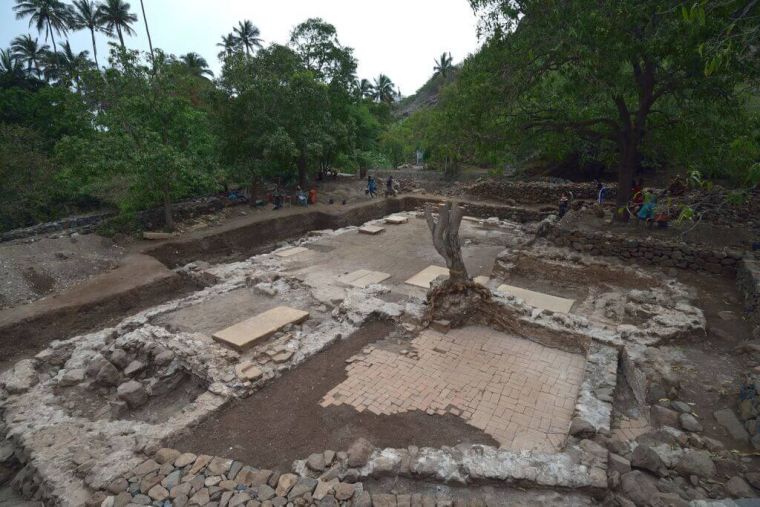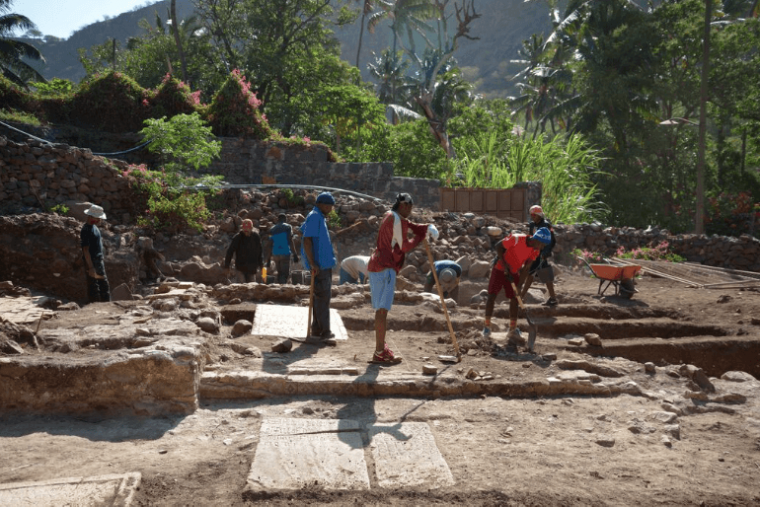Earliest church in the tropics dug up on historic slave trade island
The earliest known church built in the tropics has been dug up by archaeologists from Cambridge University in what was the heart of the Atlantic slave trade.
Remains of a church on Cabo Verde's Santiago Island, off the West African coast, date back to the late 15th century, when Portugal first colonised the islands that played a central role in the global African slave trade.
The islands are where the Portuguese established a stronghold to start the first commerce with Africa south of the Sahara. This turned into a global trade in African slaves from the 16th century. Cabo Verde played a central part as a shipment centre.

The earliest remains of the church of Nossa Senhora da Conceição date from around 1470, with a further larger construction dating from 1500.
This church is the oldest formal European colonial building yet discovered in sub-Saharan Africa, the researchers say. It was found in the ruins of Cidade Velha, the former capital of Cabo Verde, once the second richest city in the Portuguese empire.
"It's a profound social and political story to which these new archaeological investigations are making an invaluable contribution," said Cambridge Professor Marie Louise Stig Sørensen.
Archaeologists from the university and the Cambridge Archaeological Unit have just completed the excavation and conservation.
"We've managed to recover the entire footprint-plan of the church, including its vestry, side-chapel and porch, and it now presents a really striking monument," said Christopher Evans, who heads the archaeology unit.
"Evidently constructed around 1500, the most complicated portion is the east-end's chancel where the main altar stood, and which has seen much rebuilding due to seasonal flash-flood damage. Though the chancel's sequence proved complicated to disentangle, under it all we exposed a gothic-style chapel.
"This had been built as a free-standing structure prior to the church itself and is now the earliest known building on the islands – the whole exercise has been a tremendous success."

One enormous tombstone found in the side chapel belonged to Fernão Fiel de Lugo, a slaver and the town's "treasure holder" between 1542 and 1557. "This is a place of immense cultural and heritage value. This excavation has revealed the tombs and graves of people that we only know from history books and always felt could be fiction," said Dr Manuel Monteiro de Pina, mayor of Cidade Velha.
The research team discovered a densely packed cemetery dug into the floor of the church, which they say will be of great importance for future academic investigations. It is estimated that more than 1,000 people were buried here before 1525, providing a capsule of the first 50 years of colonial life on the island.
Preliminary analysis of samples shows that about half the bodies are African, with the rest from various parts of Europe. An excavation is being planned to collect data for isotope analysis of more bodies to learn more about the country's founding population and its early slave history.
"From historical texts we have learned about the development of a 'Creole' society at an early date with land inherited by people of mixed race who could also hold official positions. The human remains give us the opportunity to test this representation of the first people in Cabo Verde," said Evans.
Hundreds of people have visited the site since work began.,
President Jorge Carlos Fonseca endorsed the contribution made by this project: "I can see the importance the site has for Cabo Verde to understand our history and our identity," he said.
The ten small islands that make up Cabo Verde are harsh volcanic rock, and were barren of people, mammals and trees until the Portuguese arrived in 1456. The Portuguese transformed the islands into one of the major hubs for the transatlantic slave trade, bringing with them crops, livestock and people in the form of traders, missionaries and thousands upon thousands of slaves. The slaves were funnelled through the islands where they were 'sorted' and sold before being shipped off to plantations across the Atlantic World.
The discovery of Brazil, in particular, and the establishment of plantations there, caused trade through Cabo Verde to explode. "The islands were a focal point for the initial wave of globalisation, all built on the back of the slave trade," said Sørensen. "The excavation reveals these global connections as the finds include fine ware and faience from Portugal, German stoneware, Chinese porcelain and pottery from different parts of West Africa."
In addition to the excavated church, there were around 22 other churches in the small river valley where the old town of Cidade Velha sits, including a large cathedral built with imported Portuguese stones. It is clear the church had huge influence here – a mere 15 degrees north of the equator – from the late medieval period onwards, say the researchers.
Centuries later, pirate attacks plagued the islands. French privateer Jacques Cassard launched a devastating attack on Cidade Velha in 1712, from which it would never recover, and, as slavery began to be outlawed during the 19th century, the islands lost their financial basis and were neglected by the Portuguese. The islanders were left to the mercy of an inhospitable landscape with erratic rainfall that undermined agricultural activities and caused drinking water to be scarce.
Cabo Verde became a republic in 1975, and as an independent nation it is coming to terms with a heritage and identity rooted in slavery. The research team believe the new archaeological discoveries will prove integral to this process.











